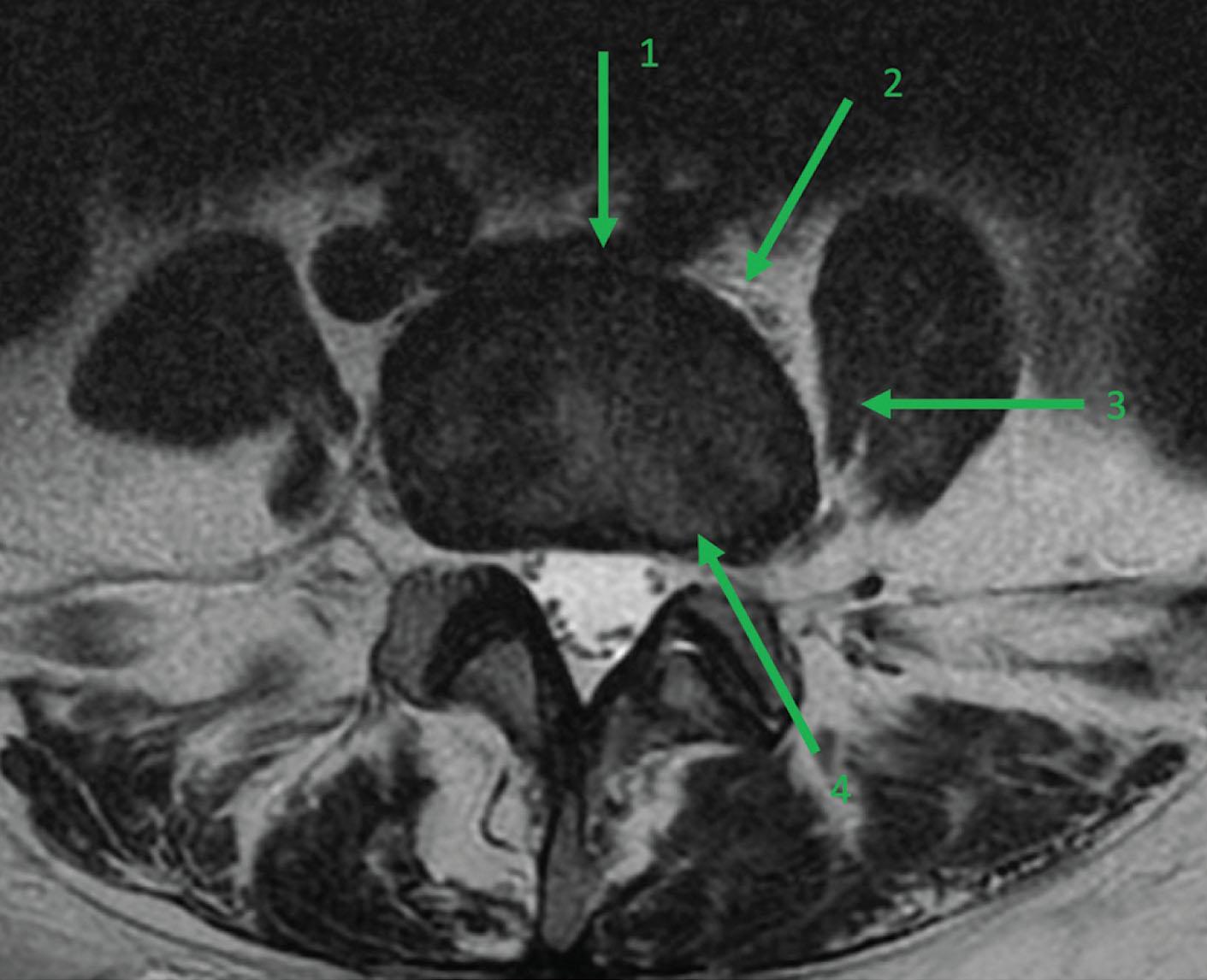Physical Address
304 North Cardinal St.
Dorchester Center, MA 02124
There are several well-described approaches for interbody fusion, and these include posterior lumbar interbody fusion (PLIF), transforaminal lumbar interbody fusion (TLIF), lateral lumbar interbody fusion (LLIF), and anterior lumbar interbody fusion (ALIF). More recently, the oblique lumbar interbody fusion (OLIF) has been added to the surgeon’s armamentarium ( Fig. 6.1 ). There are advantages of the OLIF over other interbody techniques, but there are also challenges. The use of navigation for OLIF creates further advantages for this technique. The OLIF approach allows for the placement of a large interbody graft that spans the apophyseal ring and minimizes tissue damage and potential lumbar plexus injury by accessing the disk space through a prepsoas approach instead of a direct lateral transpsoas approach. Some of the well-described complications of the lateral approach including lumbar plexus injury and genitofemoral, iliohypogastric, or ilioinguinal nerve injury are minimized, but not eliminated, via a pre-psoas approach. In addition, the oblique lateral approach at the L4–L5 level can avoid the difficulty that may arise in accessing the disk space via a true lateral approach with a high-riding iliac crest. Furthermore, the L5–S1 OLIF can be performed in the lateral position, eliminating the need for repositioning that needs to be done for an ALIF or the need for TLIF, which may not be optimal in certain cases (previous scar tissue, extremely collapsed space, or loss of lordosis).

The OLIF is appropriate for any patient who meets the diagnostic and clinical criteria for interbody fusion, which includes the diagnoses of degenerative spondylolisthesis, degenerative disk disease with foraminal stenosis necessitating indirect decompression, extension of fusion in adjacent segment degeneration, or coronal plane deformity and scoliosis. The contraindications to the OLIF include the need for a right-sided approach due to the proximity to the inferior vena cava and high risk for vascular injury. The other contraindications include anatomic constraints such as a narrow or absent operative corridor between the aorta and the psoas due to vascular or visceral structures that prevent easy access to the disk space.
There have been numerous studies in the literature comparing both the radiographic and clinical outcomes between interbody techniques; however, there is no level I evidence to support one approach over another. Despite the limited rigorous comparative outcome studies, the OLIF technique demonstrates comparable radiographic outcomes and evidence for biomechanical superiority relative to the TLIF due to the interbody cage spanning the entire apophyseal ring. In our published experience, 94.86% of cages were accurately placed using navigation and only 1 of 214 patients required revision for a malpositioned cage. Recent studies have demonstrated significant correction of the spinopelvic parameters during multilevel OLIF including L5–S1 in the correction of adult deformity. The oblique approach also has distinct advantages over the transpsoas approach with regard to the neurologic complications, which have been reported to be as high as 20% with the transpsoas approaches. Recent studies demonstrate an incidence of neurologic complications of approximately 1% to 4% with OLIF, and the vast majority of neurologic deficits tend to resolve within 8 weeks of surgery. Finally, the use of navigation with an OLIF dramatically decreases the intraoperative radiation exposure to the operating room staff and is similar to a navigated TLIF approach with regard to the reduction in radiation exposure compared to conventional fluoroscopy.
This is a 54-year-old woman with adult scoliosis and debilitating back and leg pain refractory to conservative measures.
Prior to surgery, an MRI of the thoracic and lumbar spine was obtained to evaluate for neural compression, and 36-inch standing AP and lateral radiographs with flexion-extension films were also obtained to assess sagittal and coronal alignment, evaluate for instability, and assess spinopelvic parameters. Standing radiographs demonstrated a pelvic incidence of 54 degrees, lumbar lordosis of 46 degrees, pelvic tilt of 16 degrees, sagittal vertical axis of 5.5 cm, coronal vertical axis of –2.6 cm, and a mobile L4–L5 grade I spondylolisthesis ( Fig. 6.1A and B ). An MRI of the lumbar spine demonstrated severe L4–L5 foraminal stenosis (see Fig. 6.1C ). MRI is useful to evaluate for disk degeneration and a central, lateral recess, or foraminal stenosis. In addition, the prepsoas retroperitoneal corridor for an oblique approach can be assessed on MRI with an appreciation for the relationship of the psoas to the great vessels.
Become a Clinical Tree membership for Full access and enjoy Unlimited articles
If you are a member. Log in here